In Vietnam, there are few places where the same place name has two heritage trees like Mo Temple (Nghi Duong village, Ngu Phuc commune, Kien Thuy district, Hai Phong city ). And the "old rice" tree with nearly 750 years old is the souvenir that Princess Quynh Tran left for posterity.
Having a predestined relationship with Buddhism, he used the sound of wooden fish to attract people and establish villages.
In late autumn, we had the opportunity to visit Mo Temple, where Thanh Nien Newspaper reporters met and talked with Mr. Hoang Minh Viet, deputy head of the festival committee and custodian of the national historical and cultural relic of Mo Temple. According to Mr. Viet, Princess Quynh Tran was the daughter of King Tran Thanh Tong, the older sister of King Tran Nhan Tong, because of her devotion to Buddhism, she shaved her head and became a nun and chose Nghi Duong as her place of practice in 1284.
Here, she built a shrine to worship Buddha, opened up villages, taught people how to grow mulberry and raise silkworms, and instructed people how to grow wet rice. Every day, she used the sound of a wooden fish to chant sutras, and at the same time, it was also a command to call people and establish markets. Later, thanks to the sound of her wooden fish, constructions such as Mo Temple, Mo Pagoda, Mo Market were formed.
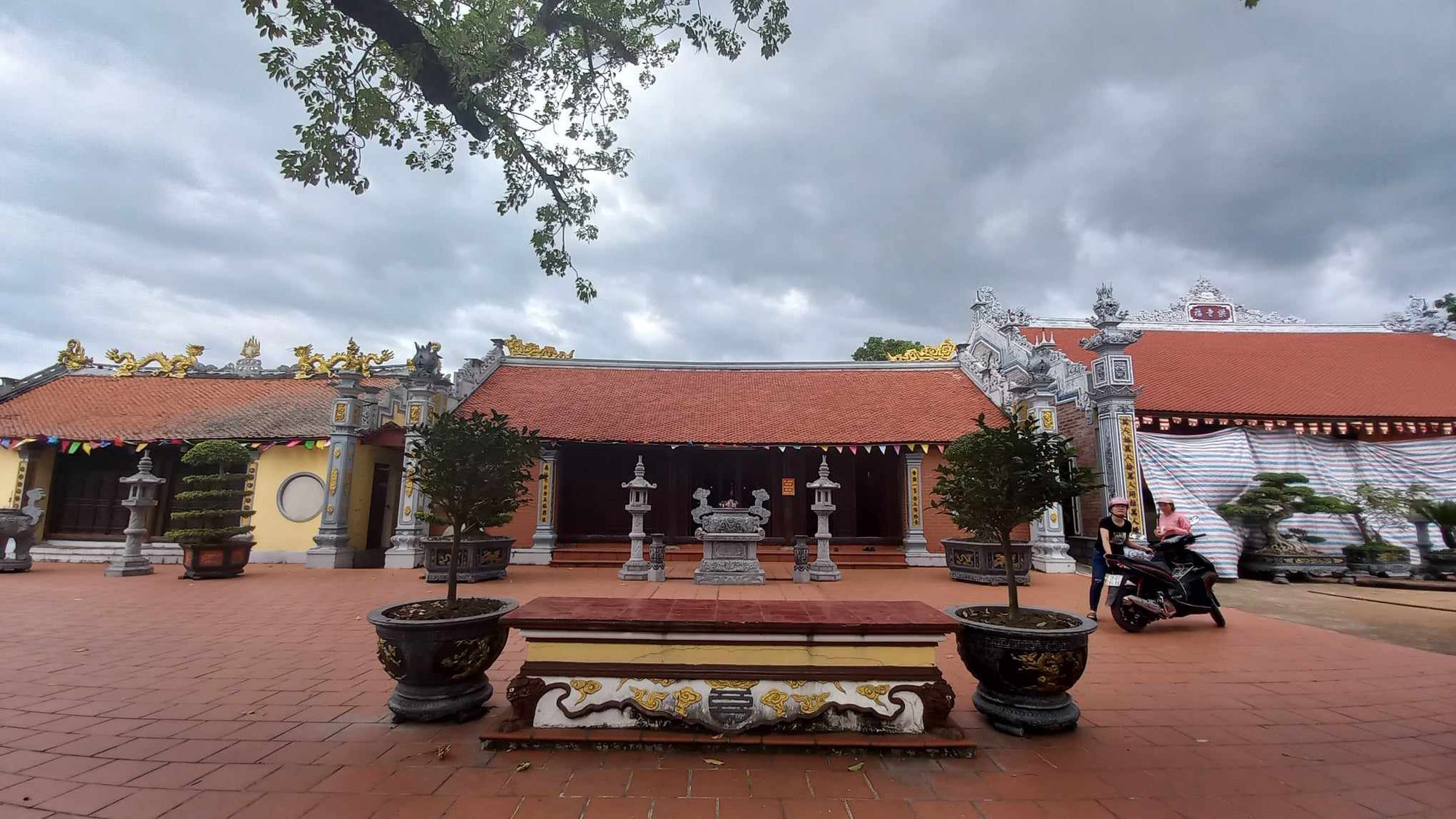
Mo Temple National Historical Site
During the years when the Tran Dynasty fought against the Yuan-Mongol invaders, she called on the people to contribute their manpower and resources to help the Tran Dynasty's army and people win the battle. Later, when the King granted her a reward, she only asked for a 5-year tax exemption for the people of Nghi Duong commune.
Princess Quynh Tran was affectionately called "Lady Mo" by the people in the area. When she passed away, the people in the area built a Mo Temple to worship her and burn incense all year round. In 1992, Mo Temple was recognized by the State as a National Historical and Cultural Relic.
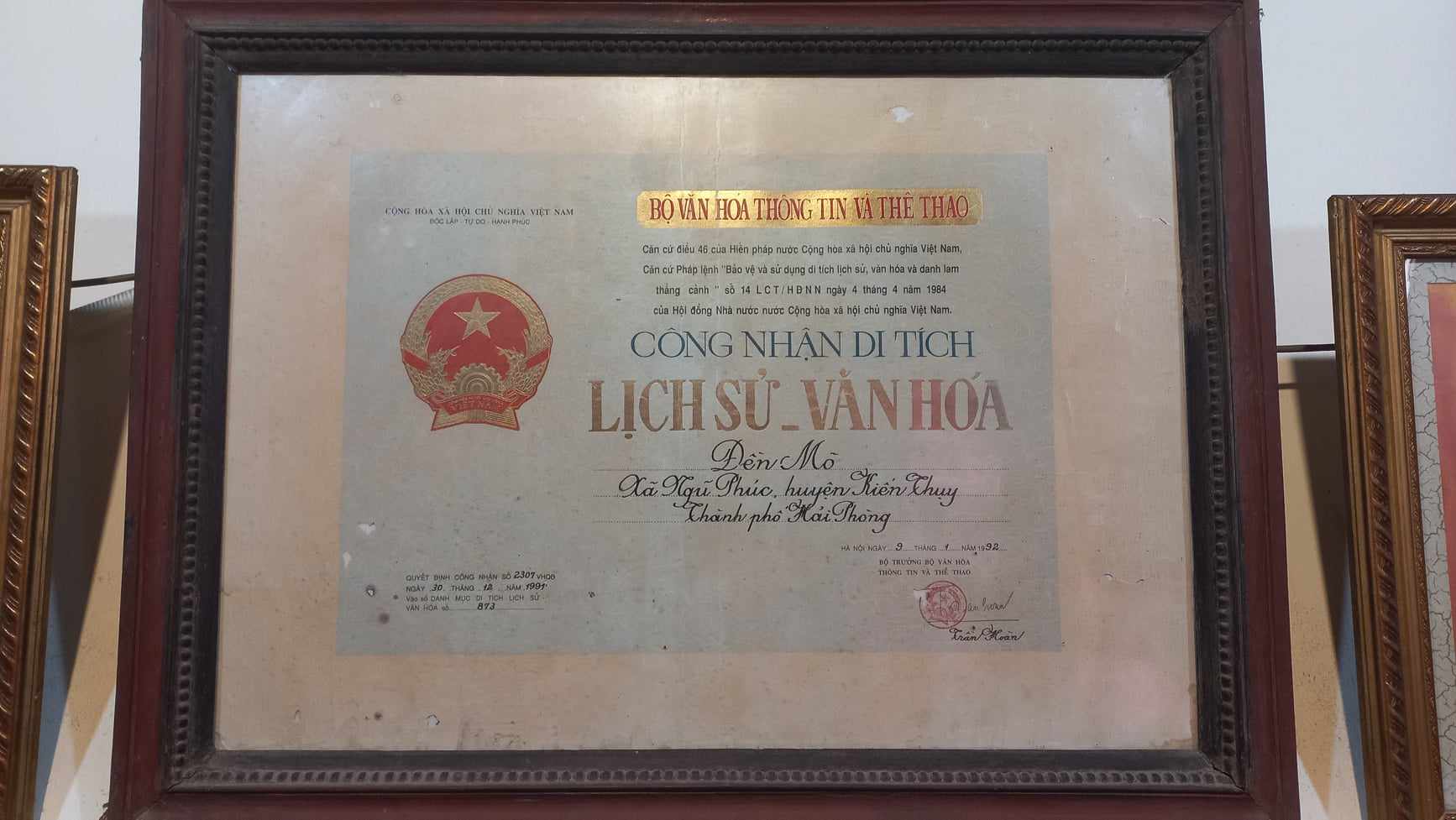
Certificate of recognition of National Historical and Cultural Relic for Mo Temple
Mr. Nguyen Sy Manh, Vice Chairman of Ngu Phuc Commune People's Committee, said that the Mo Temple Festival in memory of Princess Quynh Tran is held for 3 days, from February 12 to February 14 of the lunar calendar every year, attracting a large number of tourists from inside and outside the district. It is expected that in 2023, this relic site will attract more than 30,000 tourists and locals to visit, burn incense and make offerings.
Taking care of and preserving the rice 'grandfather', a keepsake of Princess Quynh Tran
Passing through the three-door gate of Mo Temple, visitors are greeted by two ancient trees with lush foliage, shading the temple yard. On the left of the temple is a kapok tree, and on the right is a longan tree.
Mr. Hoang Minh Viet said that according to the elders in the area, the kapok tree was planted by "Lady Mo" Princess Quynh Tran herself one year after she came here to establish a hermitage to practice asceticism.
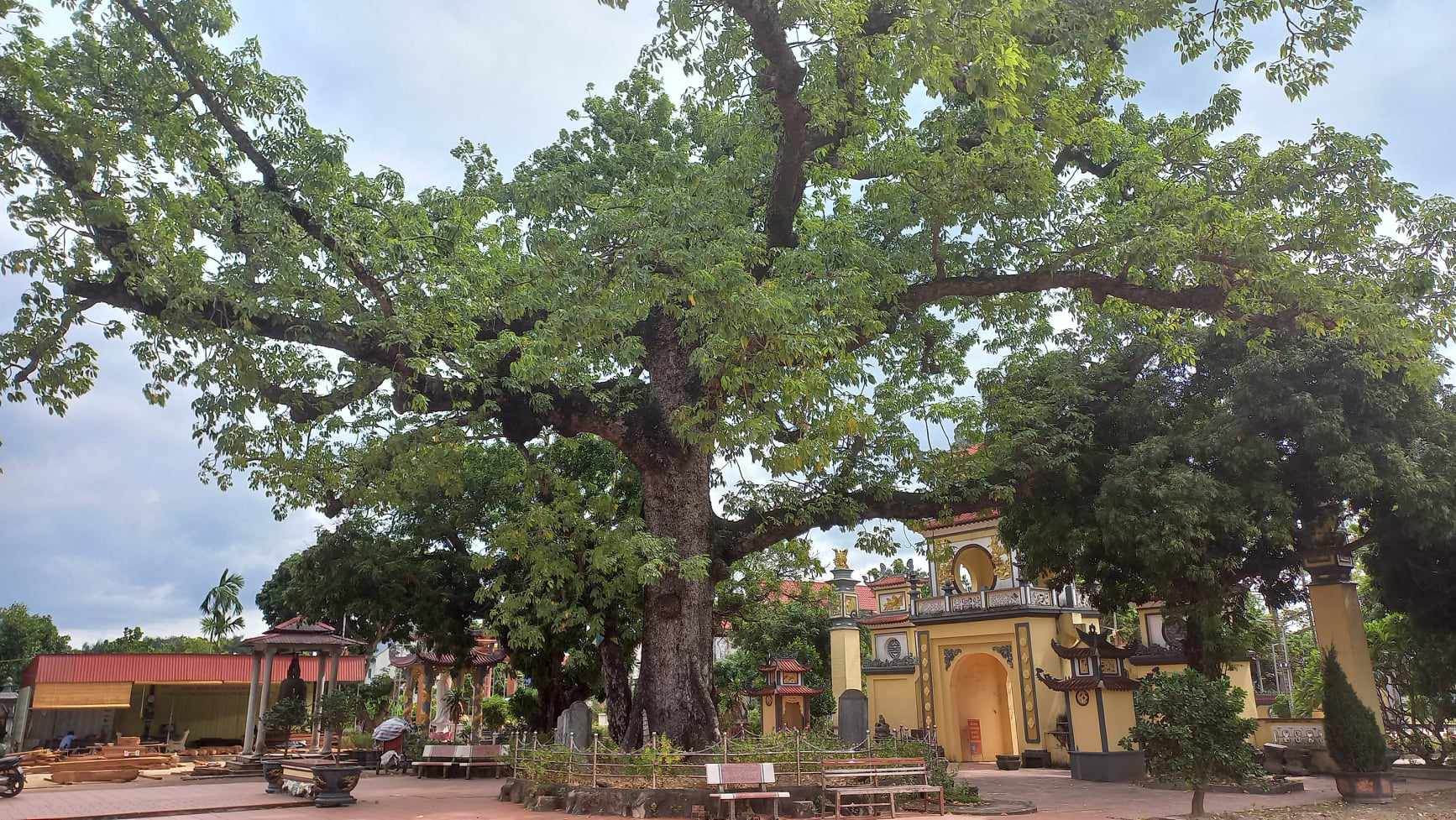
The ancient kapok tree, nearly 750 years old, casts its shade over the courtyard of Mo Temple.
During her lifetime, one day in February, there was a drought, no rain for many months, rivers and lakes were dry, a group of children herding buffaloes came to the temple to ask her for water to drink. In front of the temple was a well, looking down at the dry well, she told the children to wrestle under the kapok tree and she would give them water to drink. While the children were wrestling, it immediately rained. From then on, the drought ended, the wind and rain were favorable, and the people had a bountiful harvest.
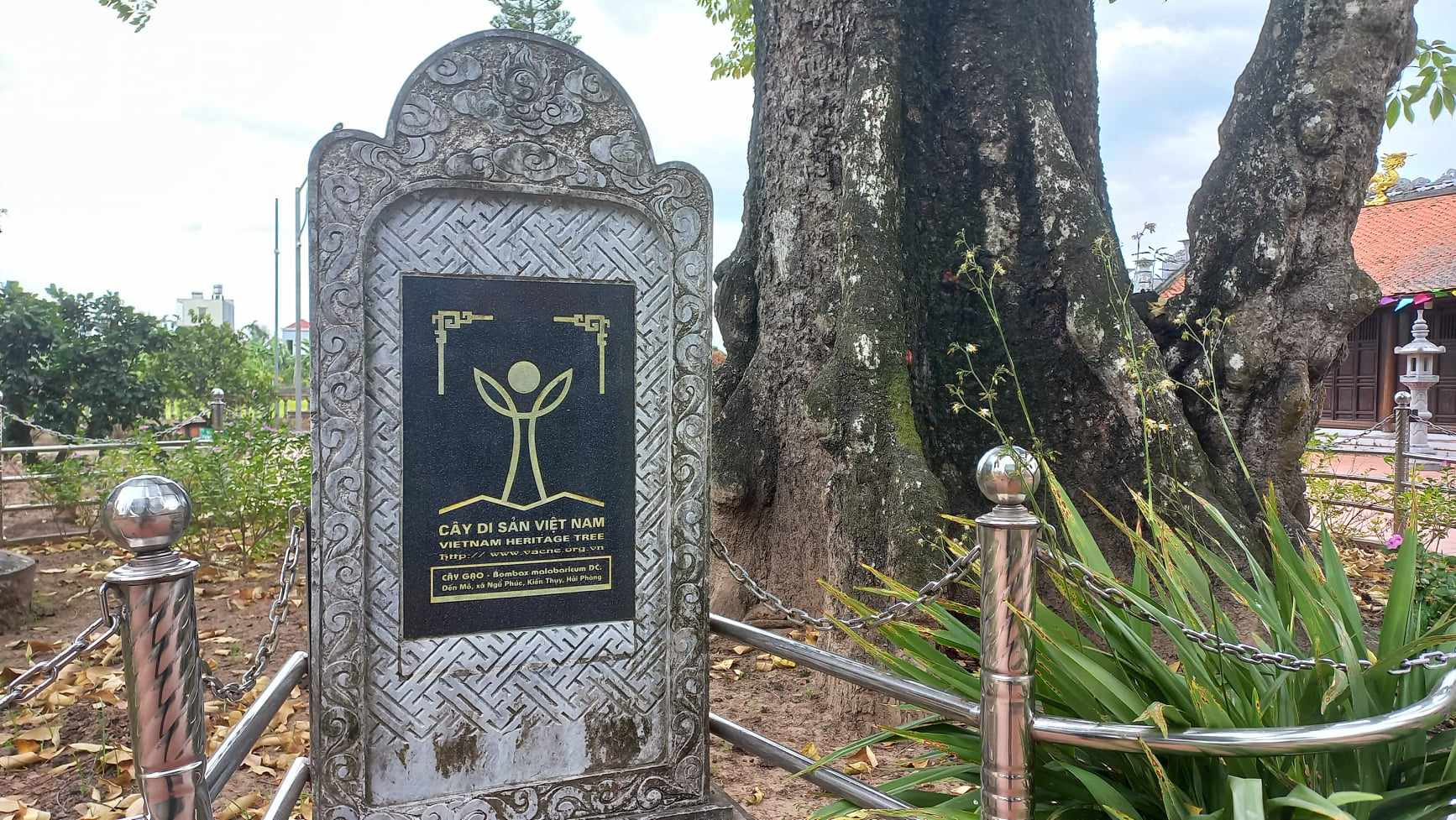
The Kapok tree was recognized as a Vietnam Heritage Tree in 2011.
Through the ups and downs of history, under the bombs and bullets of war as well as natural disasters and floods, the "old" rice tree still stands there, standing tall with the years. Up to now, the tree is over 30 meters high, the diameter of the base is over 2.5 meters, the canopy covers an area of hundreds of square meters. Looking at the "old" rice tree at Mo temple, green all year round, few people would think that the tree is nearly 750 years old. At the base, there is an ancient stele erected during the reign of King Thanh Thai.
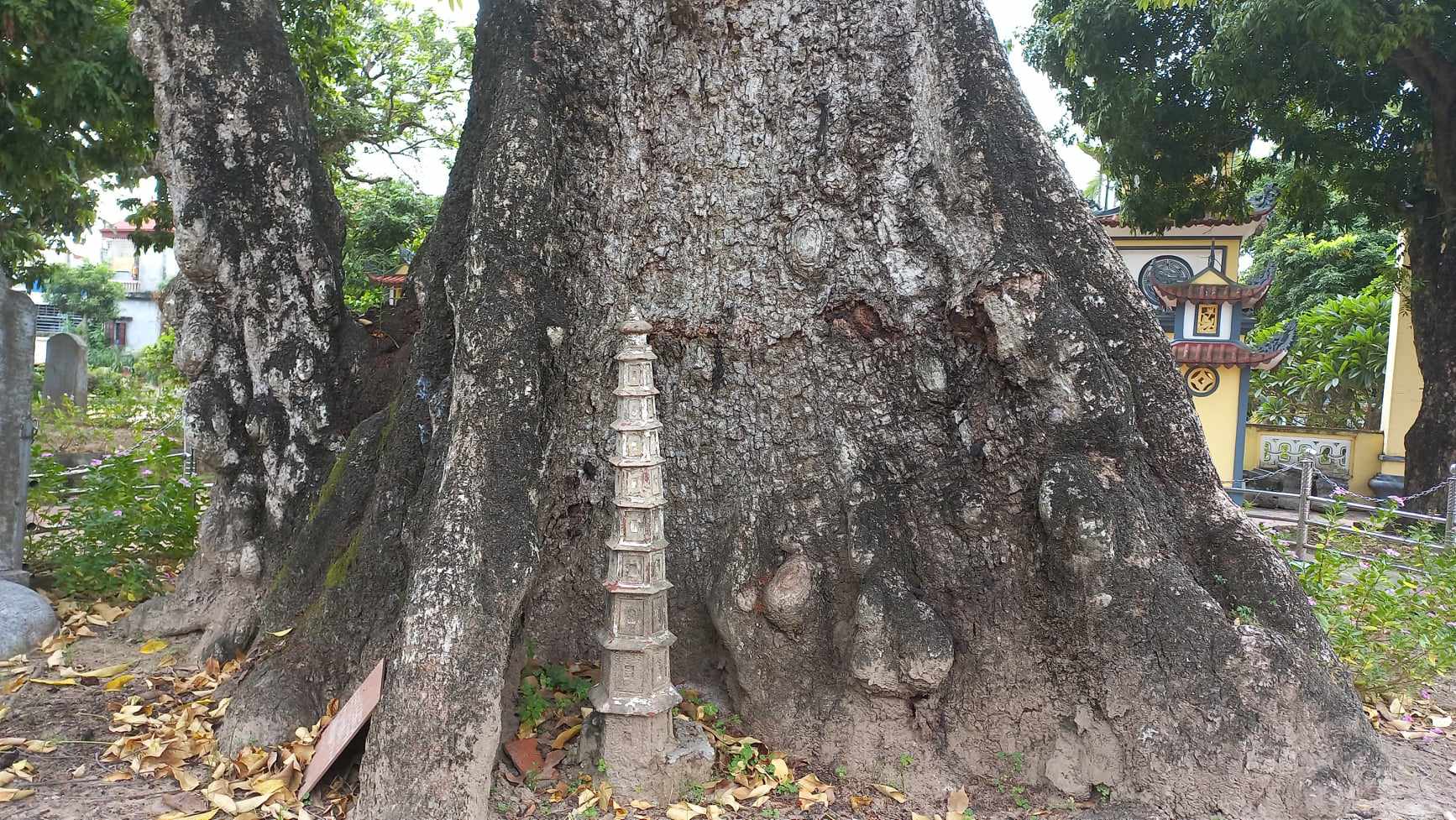
Rough tree trunk with large diameter, 7 - 8 people can hug it
From a distance of 2 - 3 km, you can still observe the kapok tree. When you get closer, the main trunk and the secondary trunk look like the image of a mother hugging and comforting her child. Therefore, local people believe that couples who are infertile can just come together and touch the bark at the base of the tree or pray to "Lady Mo" and take a bit of the bark to put on their pillow to quickly conceive as desired.
In 2011, the Mo Temple cotton tree was recognized by the Vietnam Association for Conservation of Nature and Environment as a Vietnam Heritage Tree (ranked 65/70 trees honored by this organization and the only cotton tree on the list up to that time). In 2012, this cotton tree continued to be recognized and honored by the Vietnam Record Center as the oldest cotton tree in Vietnam.
In addition to the "old" rice tree in front of Mo Temple, there are currently 4 other rice trees in the area around the temple, all of which are descendants of the "old" tree. It is estimated that these trees are also hundreds of years old.
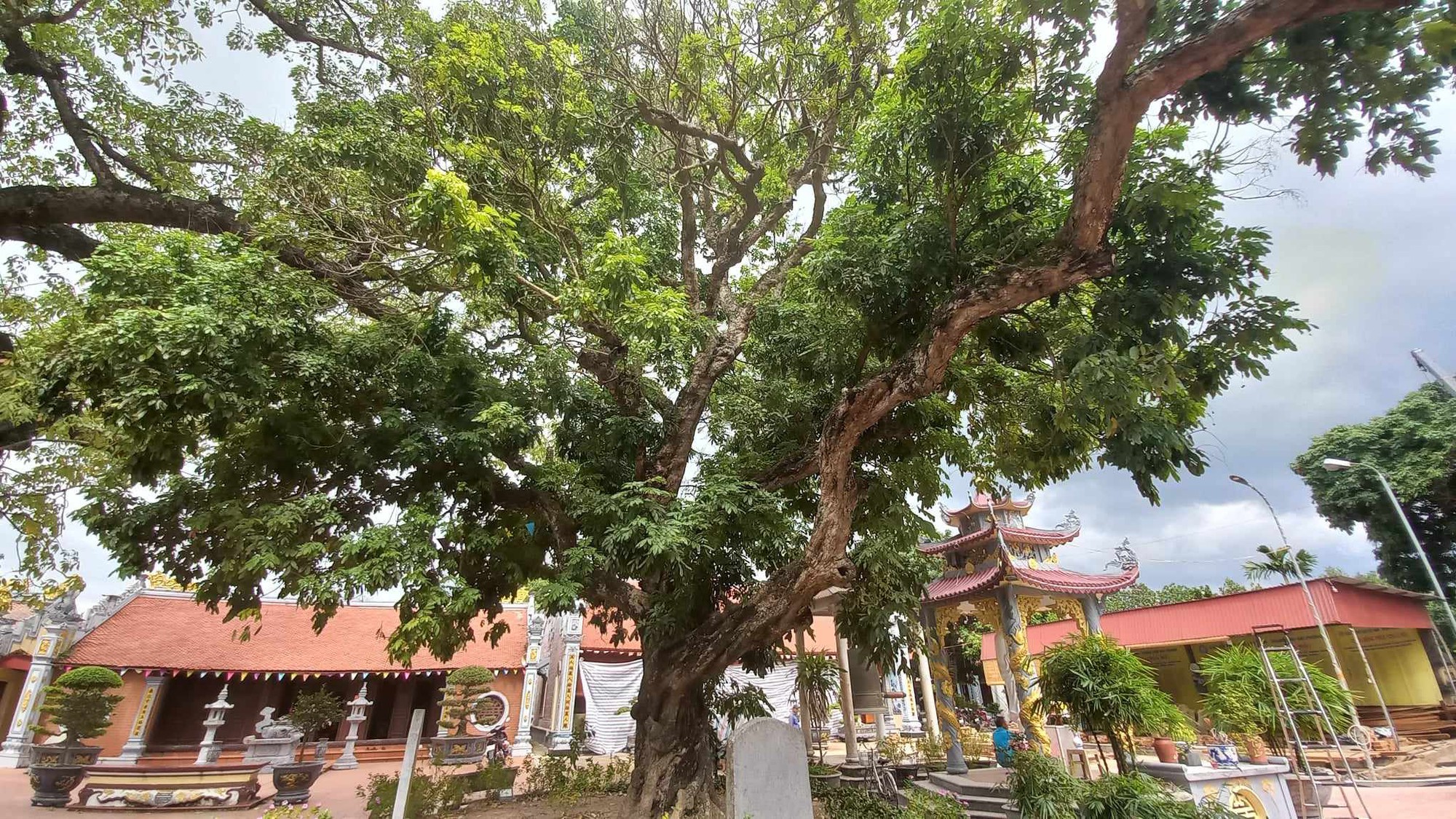
Longan tree with age of more than 500 years is still lush today
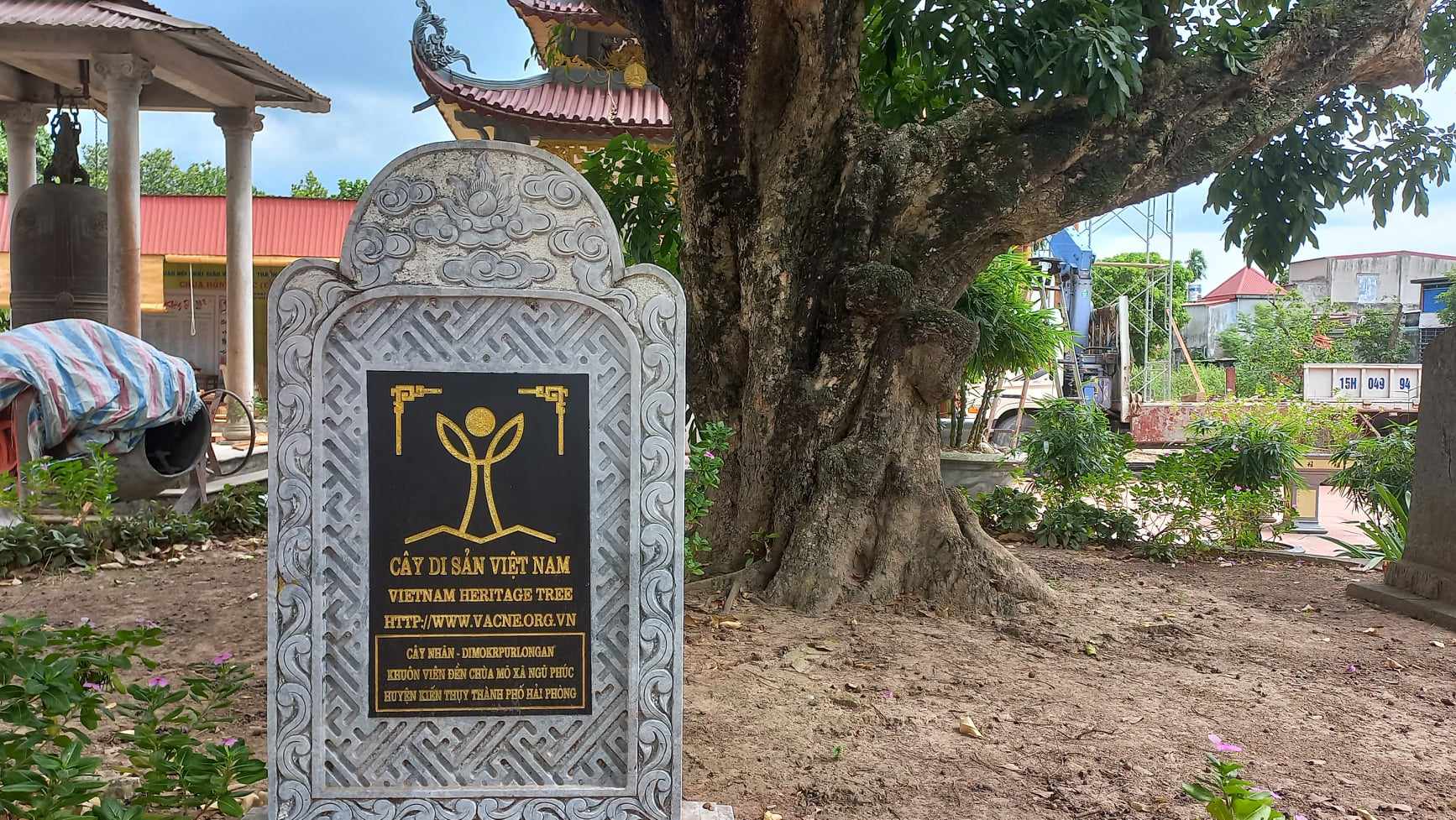
Longan tree recognized as Vietnam Heritage Tree in 2022
On the right side of the temple, an ancient longan tree over 500 years old was also recognized as a Vietnamese Heritage Tree by the Vietnam Association for Conservation of Nature and Environment in 2022. Under the tree is an ancient stele from the Mac Dynasty.
To preserve and promote the value of the Mo Temple relic site as well as the Kapok and Longan trees, which are two heritage trees, in addition to applying technical measures to help the trees grow well, based on the commune's proposal, the People's Committee of Kien Thuy District is researching and considering a plan to expand the relic site from the current 1.2 hectares to more than 2.8 hectares. At the same time, it is necessary to strengthen propaganda and promotion to a large number of tourists near and far to further develop cultural and spiritual tourism.
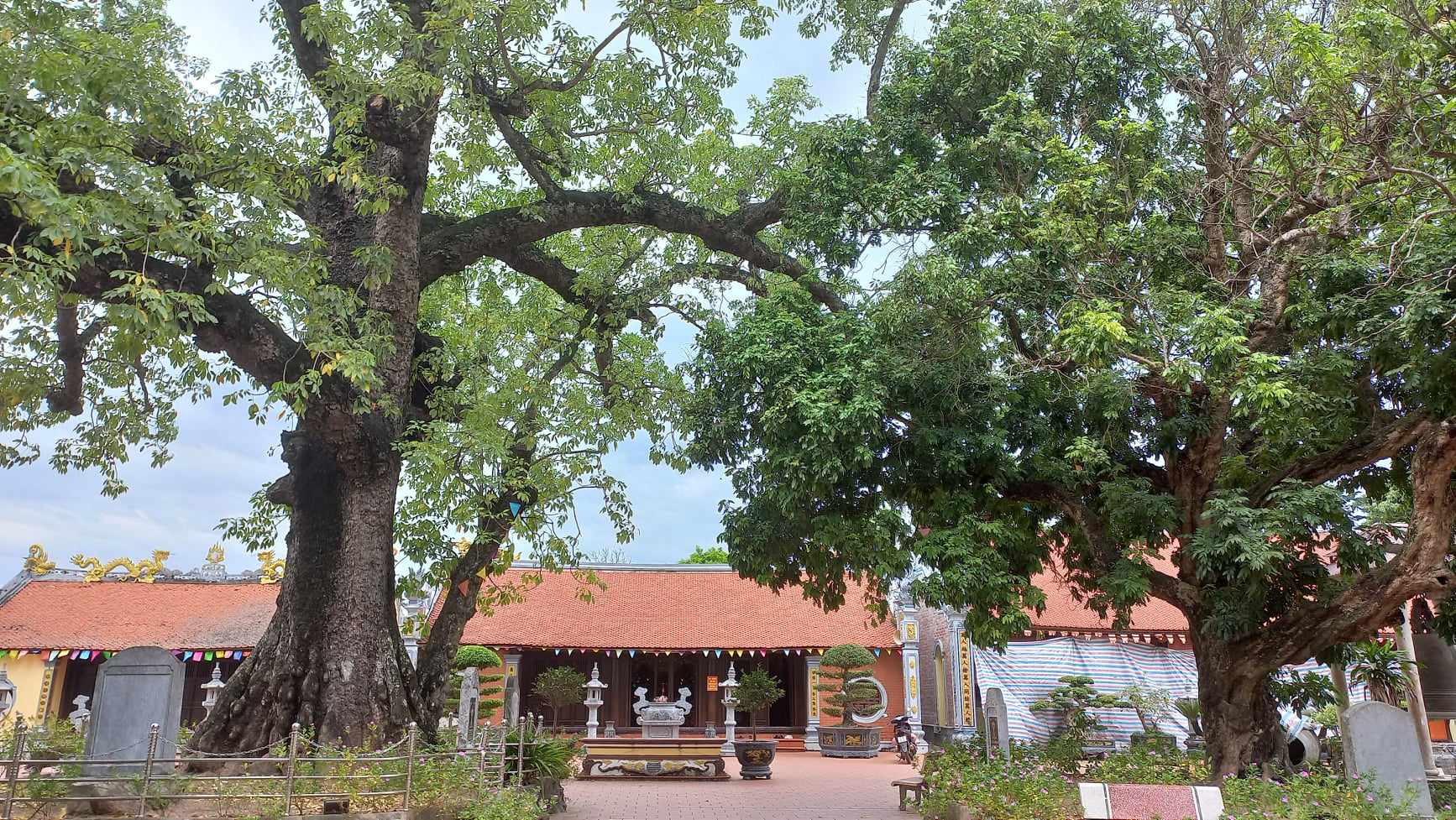
Two heritage trees stand tall like generals in front of Mo Temple.
Every day, the two ancient trees are like two generals guarding the temple gate, like elders, providing shade to protect the villagers. Local people from near and far come to respectfully burn incense, admire the scenery, and advise the younger generations to raise awareness of preserving the cultural values left by their ancestors.
Source link





































































































Comment (0)